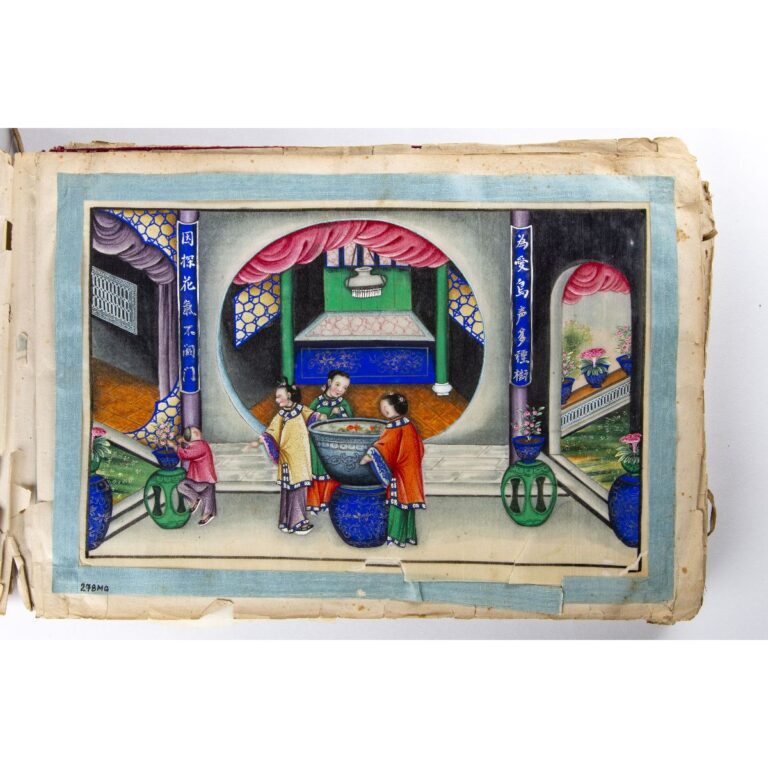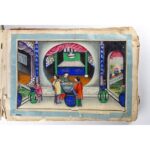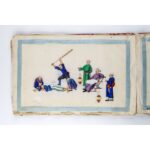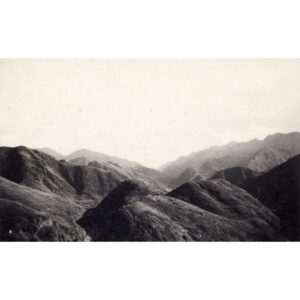Painting Admiring fish
The second picture from an album of Chinese paintings of the everyday lives of court ladies. Girls admire a goldfish while a child plays beside flowers. In the background, inscriptions refer to the intoxicating fragrance of flowers and the joy of birdsong.
Small paintings with lurid colours were usually produced in workshops where individual artists were tasked with the production of a part of the painting. They painted in gouache technique, sketching the figures with the help of models, which they then painted. When the painting was finished, it was placed on ordinary paper to fix the material and the edges were wrapped with silk ribbons or painted paper. The pictures were then bound together in an album, usually in groups of twelve, with each album featuring a single subject. (NVS)





































Do you have a comment or additional information about the subject?